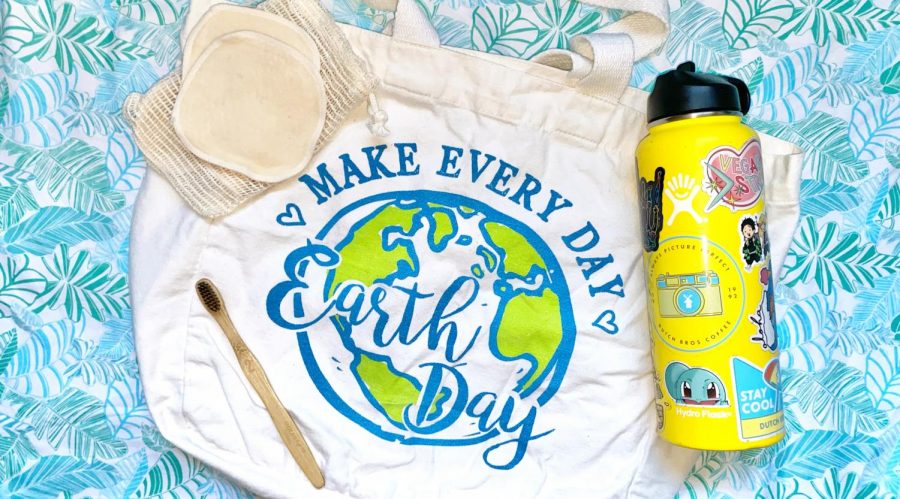5 Ways to Live More Sustainably
Incorporating reusable items or items made from sustainable materials into daily life is a solid step in reducing one’s carbon footprint.
As the climate crisis continues to ravage and decimate the world as we know it, the urgency to reduce our impact increases with each passing day.
While corporations are vastly more responsible for the degradation of the environment than everyday people, we still have an individual responsibility to examine what improvements we can contribute toward alleviating the situation. Living a more sustainable life is possible for every person. If everyone committed to even a couple alterations to their lives, saving the planet wouldn’t feel as hopeless as many people view it to be.
Here are five simple ways to incorporate sustainable practices into one’s everyday life:
Sustainable swaps
We use a plethora of everyday items that generate unnecessary amounts of waste. Items such as shampoo bottles, dryer sheets, cotton swabs, or plastic water bottles are common examples. All these items have counterparts that are better for the environment by producing less waste. Many bath products come in bar form, which eliminates the need for a plastic container. Reusable bags, straws, utensils, and water bottles are great places to start. Companies like Blueland, The Grove Collaborative, Zero Waste Store, and R Planet (which happens to be local-, POC-, and women-owned) sell eco-friendly products that make sustainable alternatives that are easily accessible.
Obviously throwing away everything and re-purchasing their sustainable counterparts is futile. The mission and mindset of sustainability is using what is already available to avoid overconsumption or overproduction. Consider these products once the old ones are finished.
Shop with intention, not impulse
According to the Princeton Student Climate Initiative, fast fashion, the process of mass-producing garments to follow trends, is responsible for about 9% of all global carbon emissions. This is more than all international flights and sea travel combined. Boycotting or reducing business with fast fashion brands like Zara, Fashion Nova, Shein, and Forever 21 is one of the easiest ways to commit to a more sustainable life. As an alternative, check out the local thrift stores to buy clothes. It’s cheaper and has a wider variety. More importantly, buy clothes that are of higher quality and will last a long time independent of fleeting trends. A helpful rule of thumb is only buy if intended to be worn at least 30 times.
Hold corporations and governments accountable
Try to avoid companies that fail to prioritize conservation in their business model. Support businesses that are transparent with their impact on the environment and commit to reducing their emissions. Good on You is a website that rates fashion companies based on how ethical and sustainable they are. For companies that fall short of being an environmentally friendly business, write them a letter. This also applies to local governments. Vocalize what’s working and what’s not, and how they can better align themselves to be more sustainable.
Consume more plant-based meals
Fully committing to veganism or vegetarianism is unrealistic for some people, and that’s okay. The goal of sustainability is progress, not perfection. With that being said, one easy way to reduce waste is to incorporate more plant-based meals. Livestock and dairy production are two of the largest contributors to greenhouse gases, so switching to meals including food like veggie burgers, tofu, and nut milk are small yet helpful methods to being better for the planet. One small tradition within the environmental community is Meatless Mondays, when people eat only plant-based meals on Mondays to commit at least one day of the week to cutting meat out of their diet in efforts to practice sustainability.
Repair and repurpose what is already owned
We’ve all heard of the common saying to reduce, reuse, recycle. Two of the lesser known “r” words that also contribute to the environmental movement is to repair and repurpose our belongings. Repairing items extends the life of it and ensures the maximum amount of usage is gotten out of it. It’s easy to fix a broken mug or photo frame, or to spice them up, another form of repair is to upcycle it. A drawer is still a drawer, even if it’s styled differently to match a new aesthetic. It’s natural to want a change in life, so repainting or redecorating something is a simple way to encourage both change and mindfulness toward consumption. Repurposing items can include using old T-shirts as rags, shoeboxes for organization, jars as plant-holders. Before throwing something out, take a moment to ponder whether it can be given new life as a different role around the house.
